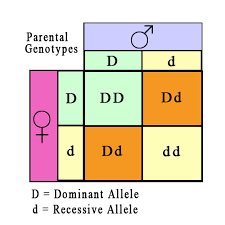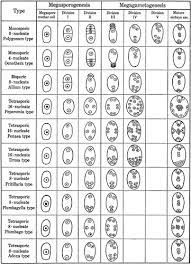POLLINATION - POLLEN TRANSFER
POLLINATION
Based on
the destination of pollen grains, two types of pollination are recognized .they
are
- Self pollination
- Cross pollination
(Auto = self, gamos = marriage):
According to a majority of Botanists, the transfer of pollen
on the stigma of the same flower is called self-pollination or Autogamy.
Self-pollination is possible only in those plants which bear
bisexual flowers. In order to promote self- pollination the flowers of the plants
have several adaptations or mechanisms.
They are:
1. Cleistogamy: In cleistogamy (Greek Kleisto = closed.
Gamos = marriage) flowers never open and expose the reproductive organs and
thus the pollination is carried out within the closed flower. Commelina, Viola,
Oxalis are some examples for cleistogamous flowers. In Commelina benghalensis,
two types of flowers are producedaerial and underground flowers. The aerial
flowers are brightly coloured, chasmogamous and insect pollinated. The
underground flowers are borne on the subterranean branches of the rhizome that
are dull, cleistogamous and self pollinated and are not dependent on
pollinators for pollination.
2. Homogamy: When the stamens and stigma of a flower mature at
the same time it is said to be homogamy. It favours selfpollination to occur.
Example: Mirabilis jalapa,,Catharanthus roseus
3. Incomplete dichogamy: In dichogamous flowers the stamen
and stigma of a flower mature at different time. Sometimes , the time of maturation
of these essential organs overlap so that it becomes favourable for
self-pollination.
Cross - pollination
It refers to the transfer of pollens on the stigma of
another flower. The cross-pollination is of two types:
i. Geitonogamy: When the pollen deposits on another flower
of the same individual plant, it is said to be geitonogamy. It usually occurs
in plants which show monoecious condition. It is functionally cross-pollination
but is generally similar to autogamy because the pollen comes from same plant.
ii. Xenogamy: When the pollen (genetically different)
deposits on another flower of a different plant of the same species , it is
called as xenogamy.
Contrivances of cross-pollination
The flowers have several mechanisms to promote
cross-pollination which are also called contrivances of cross-pollination or outbreeding
devices. It includes the following.
1. Dicliny or Unisexuality
When the flowers are unisexual only crosspollination is
possible. There are two types.
i. Monoecious: Male and female flowers on the same plant.
Coconut, Bitter gourd. In plants like castor and maize, autogamy is prevented
but geitonogamy takes place.
ii. Dioecious : Male and female flowers on different plants.
Borassus, Carica and Phoenix.
Here both autogamy and geitonogamy are prevented.
2. Monocliny or Bisexuality
Flowers are bisexual and the special adaptation of the
flowers prevents self-pollination.
i. Dichogamy: In bisexual flowers anthers and stigmas mature
at different times, thus checking self-pollination. It is of two types.
a. Protandry: The stamens mature earlier than the stigmas of
the flowers. Examples: Helianthus, Clerodendrum
b. Protogyny: The stigmas mature earlier than the stamens of
the flower. Examples: Scrophularia nodosa and Aristolochia bracteata
ii. Herkogamy: In bisexual flowers the essential organs, the
stamens and stigmas, are arranged in
such a way that self-pollination becomes impossible. For example in Gloriosa superba, the style is reflexed away from the
stamens and in Hibiscus the stigmas project far above the stamens
Heterostyly: Some plants produce two or three different
forms of flowers that are different in their length of stamens and style.
Pollination will take place only between organs of the same
length.
a. Distyly: The plant produces two forms of flowers, Pin or
long style, long stigmatic papillae, short stamens and small pollen grains; Thrum-eyed
or short style, small stigmatic papillae, long stamens and large pollen grains.
Example: Primula. The stigma of the Thrum-eyed flowers and
the anther of the pin lie in same level to bring out pollination.
Similarly the anther of Thrum-eyed and stigma of pin ones is
found in same height. This helps in
effective pollination.
b. Tristyly: The plant produces three kinds of flowers, with
respect to the length of the style and stamens. Here,the pollen from flowers of
one type can pollinate only the other two types but not their own type. Example
: Lythrum
iv. Self sterility/ Self- incompatibility: In some plants,
when the pollen grain of a flower reaches
the stigma of the same, it is unable to germinate or prevented to germinate on
its own stigma. Examples: Abutilon, Passiflora. It is a genetic mechanism.
AGENTS OF POLLINATION :
In angiosperms, pollens are immotile and thus, have to be
carried to the stigma by external pollinating agents. Depending upon their
nature the agents may be 1. Biotic agents: Insects, Birds, Snails etc. 2.
Abiotic agents; wind, water.
BIOTIC AGENTS :
i. Entomophily: It refers to the pollination brought about
by insects. Examples: Salvia, Yucca, Ficus.
ii. Ornithophily: It refers to the pollination brought about
by birds. Examples: Salmalia, Erythrina, Callistemon.
iii. Cheiropterophily: It refers to the pollination brought
about by bats. Examples: Adansonia, Eperua falcata.
iv. Malacophily: It refers to the pollination brought about by snails & slugs. Examples: Alocasia, Lemna, Colocasia.
v. Myrmecophily:
It refers to the pollination brought about by ants. Examples: Medicago sativa,
Melitotus officinalis.
vi. zoophily: It refers to the pollination brought about by
animals. Examples: Arctium, Galium aparine.
ABIOTIC AGENTS:
i. Anemophily: It
refers to the pollination brought about by winds. Examples: Wheat, maize,
coconut.
ii. Hydrophily: It refers to the pollination brought about
by water. It is of two types; 1. Ephydrophily: Pollination occuring on the
water surface. Examples: Elodes, Hydrilla. 2. Hyphydrophily: Pollination
occuring beneath the water surface. Examples: Najas, Ceratophyllum.
REFERENCE :
THE EMBROLOGY OF ANGISPERMS 6th EDITION Author; SS BHOJWANI,
SP BHATNAGAR ,PK DANTU.
|
|



Comments